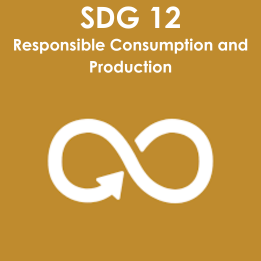
Sustainable Development Goal 12 focuses on ensuring sustainable consumption and production patterns. The goal aims to achieve efficient use of resources, reduce waste, and minimize the environmental impact of consumption and production activities. Information Technology is contributing negatively towards SDG 12 in several ways, more so with the rapid growth of Digital Transformation and use of GenAI:
Electronic Waste (e-waste): The rapid advancement of technology leads to frequent upgrades and replacements of electronic devices. The improper disposal of old or obsolete IT equipment contributes to the growing problem of electronic waste. E-waste contains hazardous materials that can harm the environment and human health.
Planned Obsolescence: Some IT products are intentionally designed with a limited lifespan or become obsolete quickly to encourage consumers to buy new products. This practice goes against the principles of sustainable consumption by promoting unnecessary and premature replacements, leading to increased resource consumption and waste generation.
Energy Consumption: The production and usage of IT infrastructure, including data centers and electronic devices, contribute to significant energy consumption. Energy-intensive data centers and the continuous operation of electronic devices can strain energy resources, leading to increased carbon emissions and environmental impact.
Mining and Resource Depletion: The manufacturing of IT products requires the extraction of raw materials such as metals and minerals. Unregulated mining practices can lead to environmental degradation, habitat destruction, and resource depletion, all of which are inconsistent with the sustainable use of resources.
Supply Chain Issues: The global supply chains for IT products often involve complex and resource-intensive processes. The extraction, processing, and transportation of raw materials contribute to carbon emissions and environmental degradation, especially when these processes are not conducted sustainably.
Digital Divide: While IT has the potential to provide access to information and opportunities, the unequal distribution of technology can widen existing social and economic disparities. The digital divide, where certain populations lack access to or skills in using IT, can result in exclusion from the benefits of digital technologies, hindering the goal of inclusive and sustainable development.
IT can contribute to SDG 12 in several ways
Efficiency and Optimization: IT solutions can help organizations optimize their processes and reduce resource consumption. This includes better supply chain management, energy-efficient operations, and waste reduction through smart technologies.
Data Analytics for Decision-Making: IT enables organizations to collect and analyze data to make informed decisions. This can lead to more efficient resource allocation, reduced waste, and improved overall sustainability.
Supply Chain Transparency: IT systems, such as blockchain, can be used to enhance transparency in supply chains. This transparency helps in tracking the origin and production methods of products, ensuring adherence to sustainable practices.
Remote Work and Virtual Collaboration: The adoption of remote work and virtual collaboration tools reduces the need for physical commuting, leading to lower carbon footprints and resource consumption associated with traditional office spaces.
E-Waste Management: As IT equipment becomes obsolete, proper disposal and recycling become crucial. IT can play a role in promoting responsible e-waste management by facilitating recycling programs and encouraging the use of eco-friendly materials in hardware.
Smart Cities: IT can contribute to the development of smart cities, where technology is used to optimize energy consumption, transportation systems, waste management, and overall resource use. This approach aligns with sustainable consumption and production patterns.
Educational Initiatives: IT can support educational programs and platforms that promote awareness and understanding of sustainable practices. This can lead to more informed consumers and businesses making environmentally conscious choices.
Digital Transformation for Sustainability: Businesses can undergo digital transformation using IT to streamline operations and minimize environmental impact. This may involve transitioning from paper-based to digital processes, reducing the need for physical resources.
Renewable Energy Management: IT can play a role in the monitoring and management of renewable energy sources. Smart grids, for example, can optimize the distribution of renewable energy, contributing to more sustainable energy consumption patterns.
Innovation for Sustainability: IT fosters innovation, and organizations can leverage technology to develop new products and services that align with sustainable principles. This can include the creation of eco-friendly products or services that promote responsible consumption.
